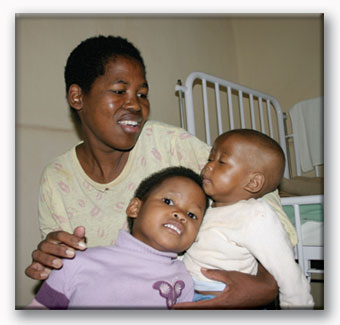The global fight against HIV and AIDS requires all the means at our disposal.
Thirty-three million. Twenty-five million. Eleven million. These numbers are worth contemplating as we commemorate World AIDS Day on December 1. The first is the World Health Organization’s estimate of those infected with the Human Immunodeficiency Virus (HIV), which causes Acquired Immunodeficiency Syndrome (AIDS). The second is the number of those who have died of AIDS since 1981. The last figure counts the children orphaned by the disease—in Africa alone.
Catholics have much to be proud of in our record against HIV. In the United States the now-folded AIDS Pastoral Care Network, founded in 1985, not only provided hospice care for the dying, it challenged Catholics to overcome their fear of those who were sick. With 56,000 new HIV infections in the United States each year, the double task of providing treatment and overcoming stigma remains.
The Catholic Church has also been on the front lines in the global effort to combat HIV. As the provider of around 25 percent of HIV care and treatment in the developing world, Catholic agencies such as the U.S. bishops’ Catholic Relief Services (CRS) have been leaders in caring for those affected by the epidemic, with CRS devoting 30 percent of its 2009 budget to its HIV effort.
Still, the Catholic response to HIV has not been without controversy. The fact that the virus is often transmitted through sexual contact has at times impeded Catholic agencies’ response, specifically regarding the use of condoms to prevent the spread of the virus. Catholic providers have tried to walk a fine line between what they know to be a critical element of an effective prevention strategy and Vatican insistence that condoms not be promoted. The issue flared most recently last spring, when Germain Grisez, a well-known moral philosopher, accused CRS of “betraying the church . . even Jesus himself” by providing accurate information about the use of condoms.
What is unfortunate is that the ban on condoms is rooted in sloppy moral theology. Since condoms are a forbidden form of birth control, the argument goes, they can’t be used to prevent HIV transmission. But anyone who has taken Moral Theology 101 knows that intention matters. If a condom is intended to prevent a life-threatening infection, it can be morally justified. The unintended effect may be the prevention of conception, but the preservation of life is the value at stake here.
Some argue that permitting condoms condones extramarital sex and prostitution, which are indeed elements in the spread of HIV. But while ending prostitution and reserving sex to marriage are important goals—and both would do much to slow new infections—the social, economic, and cultural forces driving the epidemic are beyond the reach of a simple appeal to chastity.
Meanwhile, the global population most vulnerable to infection consists of poor women (15.5 million of those infected)—both the spouses of HIV-infected men and women forced by poverty into prostitution. Neither group always has the power to refuse sex, and in both cases their children remain vulnerable. While we may wish for a better situation for these women, we do them no good by impeding access to a measure that could save their lives.
In the end the Vatican position on condoms in the fight against HIV is more church policy than church teaching. Bishops including Godfried Danneels of Belgium and Kevin Dowling of Rustenburg, South Africa—whose diocese lies at the heart of the epidemic—have argued for a change. Public health experts agree that the so-called ABC approach (abstinence, being faithful, and condoms) is the most effective method of slowing the epidemic.
But it is Jesus himself who may provide a more powerful impetus: “Woe to you lawyers!” he warned the religious leaders of his day. “For you load people with burdens hard to bear, and you yourselves do not lift a finger to ease them” (Luke 11:46). This policy is a load easily removed from Catholic agencies and those in danger from HIV. If we are on the side of life and of the poor, it is one we will seek to lift.
This article appeared in the December 2008 issue of U.S. Catholic (Vol. 73, No 12, page 8).











Add comment